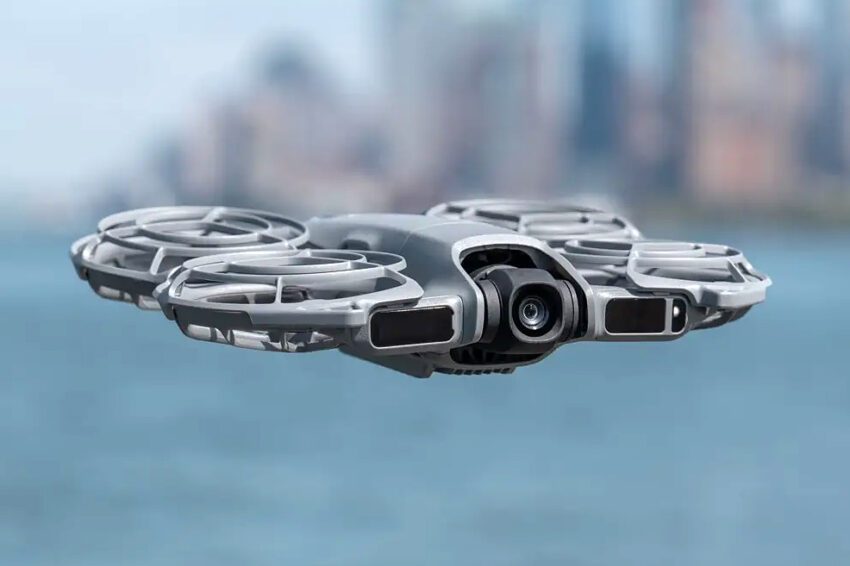
dji s neo 2 selfie drone adds DJI has unveiled the Neo 2, an upgraded version of its original Neo selfie drone, enhancing its capabilities with advanced obstacle avoidance and gesture controls.
dji s neo 2 selfie drone adds
Overview of the DJI Neo 2
Launched as a follow-up to the original Neo selfie drone introduced in September 2022, the DJI Neo 2 aims to provide a more robust and user-friendly experience for drone enthusiasts and casual users alike. Priced at approximately $211, the Neo 2 builds upon the foundation laid by its predecessor, which was designed for mass adoption but lacked several key features that users have come to expect from modern drones.
Key Features and Enhancements
The Neo 2 introduces several significant enhancements over the original model, making it a more appealing option for users looking for a reliable and feature-rich drone. Some of the most notable upgrades include:
- Obstacle Avoidance: The Neo 2 is equipped with a sophisticated obstacle avoidance system that utilizes forward-looking LIDAR and downward-looking infrared sensors. This technology allows the drone to detect and navigate around hazards while following the user in both forward and sideways flight modes. This is a marked improvement over the original Neo, which relied primarily on its design to withstand impacts.
- Gesture Controls: One of the standout features of the Neo 2 is its gesture control capability. Users can adjust the drone’s position and distance by simply moving their hands while the drone hovers nearby. This intuitive control method enhances the user experience and makes it easier to capture the perfect shot without needing to fiddle with traditional controls.
- Improved Flight Performance: The Neo 2 boasts a maximum following speed of 12m/s (nearly 27mph), significantly faster than the original Neo’s top speed, which was increased to around 18mph via a firmware update. Additionally, the Neo 2 is designed to perform better in challenging weather conditions, maintaining a stable hover in winds up to 24mph, a notable improvement over its predecessor.
- Enhanced Battery Life: A larger 1,606mAh rechargeable battery extends the Neo 2’s flight time to up to 19 minutes, allowing users to capture more footage without the need for frequent recharges. This is a critical feature for users who want to maximize their flying time.
- Increased Storage Capacity: The Neo 2 comes with 49GB of onboard storage, a significant upgrade from the 22GB available in the original model. This additional storage allows users to save more high-quality footage without worrying about running out of space.
- Camera Improvements: The drone features a dual-axis gimbal for enhanced stability during flight, ensuring smoother footage. While it retains the same half-inch sensor as the original Neo, the Neo 2 offers a wider field of view and can capture 4K video at up to 60 frames per second (fps), or up to 100fps when piloted manually.
Design and Build Quality
The DJI Neo 2 is slightly larger than its predecessor, weighing in at 151 grams—16 grams heavier than the original model. This increase in weight is a reasonable trade-off for the added functionality and improved battery life. The drone maintains its compact design, making it easy to transport and suitable for various shooting scenarios.
Despite the increase in weight, the Neo 2 retains integrated guards that fully protect its four propellers. This design feature is crucial for users who may be flying in environments with obstacles, as it minimizes the risk of damage during operation. The enhanced obstacle avoidance system further reduces the likelihood of collisions, allowing users to focus on capturing stunning aerial footage without the constant worry of crashing.
Flight Experience and Usability
The Neo 2 is primarily designed for autonomous flight, enabling users to capture compelling drone footage with minimal effort. In addition to gesture controls, the drone supports DJI’s RC-N3 and motion controllers, as well as the Goggles N3 headset for an immersive flying experience. The integration of these controls allows users to pilot the drone in various ways, catering to different preferences and skill levels.
During testing, the original Neo was found to be challenging to control in windy conditions, often drifting and making it difficult to maintain a stable hover. However, DJI claims that the Neo 2 has addressed these issues, offering improved stability and control even in less-than-ideal weather. This enhancement is particularly beneficial for users who wish to capture footage in diverse environments, including outdoor settings where wind conditions can vary significantly.
Market Position and Competition
The upgrades introduced with the Neo 2 position it as a compelling alternative to other entry-level drones on the market, such as HoverAir’s offerings, including the X1. With its enhanced features and competitive pricing, the Neo 2 is likely to attract users seeking a reliable and affordable drone for capturing high-quality footage.
However, it is essential to note that the Neo 2 is currently being launched exclusively in China, with pricing starting at 1,499 Chinese Yuan (approximately $211). This initial release strategy may limit its immediate availability to a broader audience, but it is expected that DJI will expand its distribution to other markets in the future.
Bundled Options
DJI is also offering the Neo 2 in various bundles to cater to different user needs. One bundle includes extra batteries and a multi-charger for 1,499 Chinese Yuan ($282), while another package bundles the drone with a motion control joystick and Goggles N3 for 3,699 Chinese Yuan ($521). These bundled options provide users with the flexibility to choose the package that best suits their flying style and requirements.
Stakeholder Reactions and Implications
The announcement of the Neo 2 has garnered attention from both consumers and industry experts. Many are excited about the introduction of gesture controls and improved obstacle avoidance, viewing these features as significant advancements in user-friendly drone technology. The ability to control the drone with hand gestures is particularly appealing, as it simplifies the flying experience and allows for more creative freedom when capturing footage.
Industry analysts suggest that the Neo 2’s enhancements may set a new standard for entry-level drones, pushing competitors to innovate and improve their offerings. The increased emphasis on user-friendly features and performance in challenging conditions reflects a growing trend in the drone market, where consumers are seeking devices that are not only capable but also easy to use.
Conclusion
The DJI Neo 2 represents a significant step forward in the evolution of selfie drones, combining advanced technology with user-friendly features to create a compelling product for both casual users and enthusiasts. With its enhanced obstacle avoidance system, gesture controls, improved flight performance, and increased storage capacity, the Neo 2 is poised to capture the attention of drone users looking for a reliable and feature-rich option.
As the drone market continues to evolve, it will be interesting to see how DJI’s competitors respond to the Neo 2’s advancements and whether the company will expand its availability beyond China to reach a broader audience. For now, the Neo 2 stands as a testament to DJI’s commitment to innovation and user experience in the ever-growing world of consumer drones.
Source: Original report
Was this helpful?
Last Modified: October 30, 2025 at 9:39 pm
0 views














